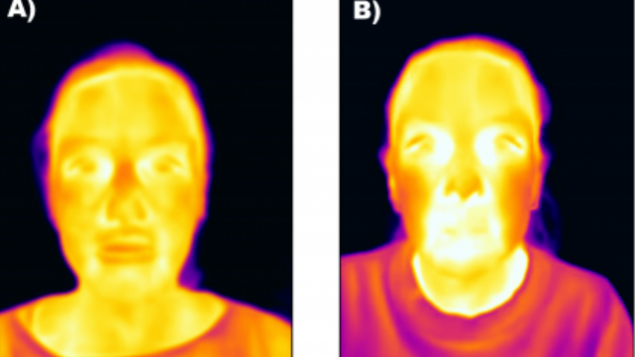The use of a device to read a person’s temperature from their forehead may not be very accurate for detecting COVID-19 infection, particularly in people with minimal symptoms, according to a new study. Research out of McGill University in Montreal and Universidad Autonoma de San Luis Potosi in Mexico suggests the use infrared thermal imaging could be more accurate.
Flaws in forehead readings flagged
Dr. José L. Ramirez-Garcia Luna says there are several major flaws with using a reading from a person’s forehead to screen for COVID-19. “Unless the temperature is measured in the axilla (armpit), mouth, or eardrum, what is being recorded is the skin temperature, not the body’s core temperature,” he says. While a person’s core temperature is around 37 C, the surface of the skin can vary depending on factors such as the ambient temperature and humidity, physical activity, hormones and differences in blood flow.

A person’s temperature taken from their forehead may accurately reflect their core temperature, says Dr. José L. Ramirez-Garcia Luna. (Rajanish Kakade/AP Photo)
COVID-19 affects eye tissue
Even if temperature is accurately recorded, Luna says fever can be triggered by different factors not specific to COVID infection. He adds that measuring skin temperatures in different areas and comparing them can reveal more. For example, the eye and the corner of the eye close to the nose has many blood vessels that respond to inflammatory stimuli. And COVID-19 has been shown to affect the blood vessels and eye tissue. “Thus this region potentially offers a window into the infectious process,” he says.
He and other researchers found that a temperature difference of 0.55C between the forehead and eye is highly predictive of COVID-19 infection. So, it helps differentiate between people with and without infection in cases where there has been close contact with an infected person and mild symptoms.
Infrared cheap, easy to use
Infrared thermography is relatively cheap, easy to use and does not require contact. However, more research is needed to see whether the results of this research are the same when the imaging is done in different settings, with different equipment and with different operators. “We are currently working on automating the method to eliminate some of its variability and looking for partnerships to test it under different scenarios,” notes Luna.
There may be privacy concerns about using imaging of people’s faces, but Luna says this could be overcome by blurring images and automating the method. The study was published in the European Journal of Clinical Investigation.







For reasons beyond our control, and for an undetermined period of time, our comment section is now closed. However, our social networks remain open to your contributions.